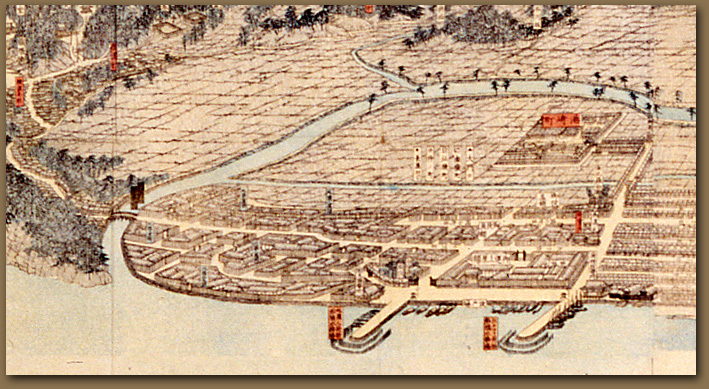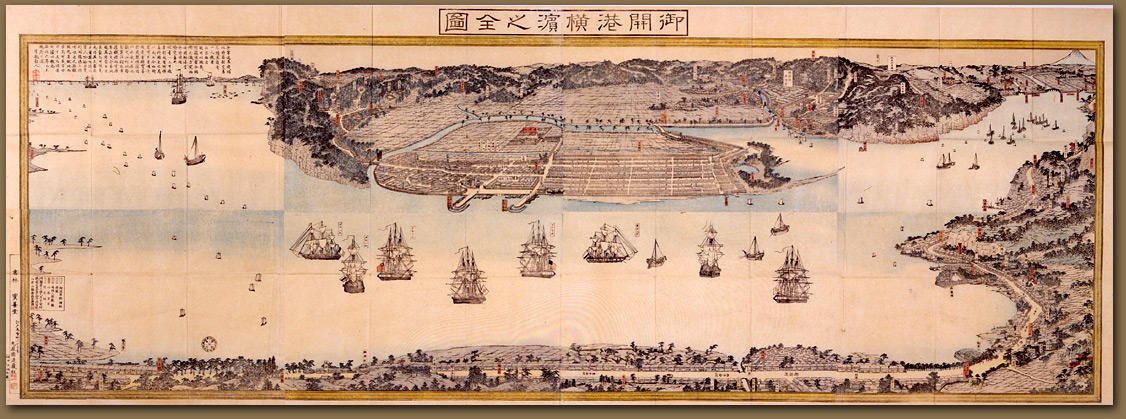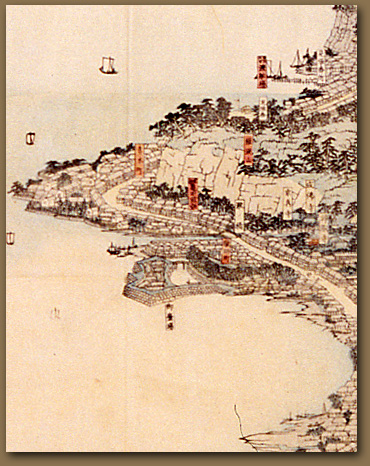Studying Sadahide’s topographical view of the new port city reveals clues as to why the clandestine change in location was made...
An entire city was constructed, ready for occupation, where the
sleepy fishing village of Yokohama lay just across the bay from Kanagawa, the city the foreigners expected to inhabit.
Sadahide The Observer:
Map

The Japanese secretly moved the site of the new foreign settlement before any foreigners arrived.
Many samurai and daimyo (ruling class) were fiercely opposed to reversing the 200-year-old policy prohibiting foreigners from residing in Japan.
Along the bottom runs the Tokaido Highway, the main road connecting the Emperor’s home city of Kyoto with the capital, Edo (now Tokyo).
Notice that Yokohama is essentially an island, surrounded by a moat, with bridges monitored by guards checking all who pass. Mountains also make surveillence easy.
...but the diplomats made a stand against the unauthorized treaty port and took up residency across the bay in the original treaty-port city, Kanagawa.
With a port superior to that of Kanagawa and brand new residences and shops ready for occupation, the newly-arrived foreign merchants were glad to move in to Yokohama...
Moving the foreign settlement to Yokohama meant it was far from the highway where confrontations might take place. In fact, a murder did occur.
Prints are gifts of Ambassador William and Florence Leonhart, reproduced courtesy
of the Arthur M. Sackler Gallery, Smithsonian Institution, Washington DC.
“Yokohama Boomtown” Massachusetts Institute of Technology © 2008 Visualizing Cultures
A Project of Professors John W. Dower and Shigeru Miyagawa
Based on the catalogue of the 1990 exhibition at the Arthur M. Sackler Gallery,
Smithsonian Institution, Yokohama: Prints from 19th-Century Japan,
by Ann Yonemura. © 1990 Smithsonian Institution
On viewing images from the historical record: click here.
Design and production by Ellen Sebring, Scott Shunk, and Andrew Burstein






